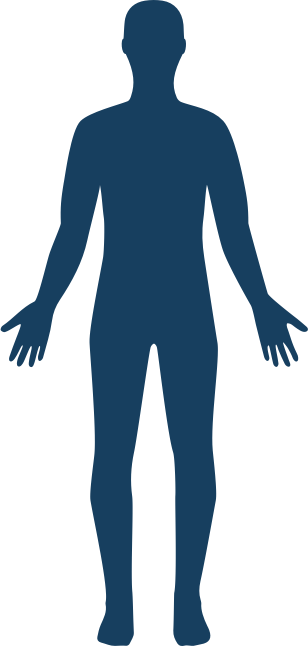How common is acute GVHD?
- Occurs in about 30% to 40% of patients who receive cells from a related donor
- Occurs in about 50% of patients who receive cells from an unrelated donor
Intended for US residents only
 Intended for US residents only
Intended for US residents only
Signs and symptoms of acute graft-versus-host disease
Click on the icons below to learn more about symptom areas.

Skin
Liver
Stomach
Intestines

Skin
Liver
Stomach
Intestines

Skin
Liver
Stomach
Intestines

Skin
Liver
Stomach
Intestines
Contact your transplant team right away if you notice any of these signs or symptoms or if new ones develop after you start treatment. Early diagnosis and intervention are important!
Signs and Symptoms of Graft-versus-Host Disease
Click on the icons below to learn more about symptom areas.
Skin
Stomach
Intestines
Liver
Swipe to scroll symptoms
Contact your transplant team right away if you notice any of these signs or symptoms or if new ones develop after you start treatment. Early diagnosis and intervention are important!
Continue to keep a watchful eye
Chronic GVHD can develop more than 3 months after transplant and can involve more organs and tissues than acute GVHD does.


Acute GVHD is primarily an inflammatory reaction, set off by the new immune cells from your donor (the graft) that are now inside your body (the host).
The donor stem cells you receive produce blood cells, including white blood cells. Their job is to help keep you healthy by traveling through your body, patrolling for foreign threats such as bacteria and viruses, and eliminating any they find.
Acute GVHD happens when those protective white blood cells made by donor cells identify your own healthy organs as foreign and attack them.
Did you know?
Acute GVHD mostly targets the skin, gastrointestinal system, and liver because these organs have the body’s highest percentage of cells that help activate the body’s protective immune responses.

How common is acute GVHD?





Near the end of my 6 weeks in the hospital (post-transplant), I developed a rash that started on my hands and went up my arm. They were pretty sure it was acute GVHD, and a biopsy confirmed it. I thought, no, not GVHD! But the doctor said it’s okay....It helped me relax considerably to realize we caught it very early and there are things you can do to fight GVHD.
Linda S.
2017 transplant recipient